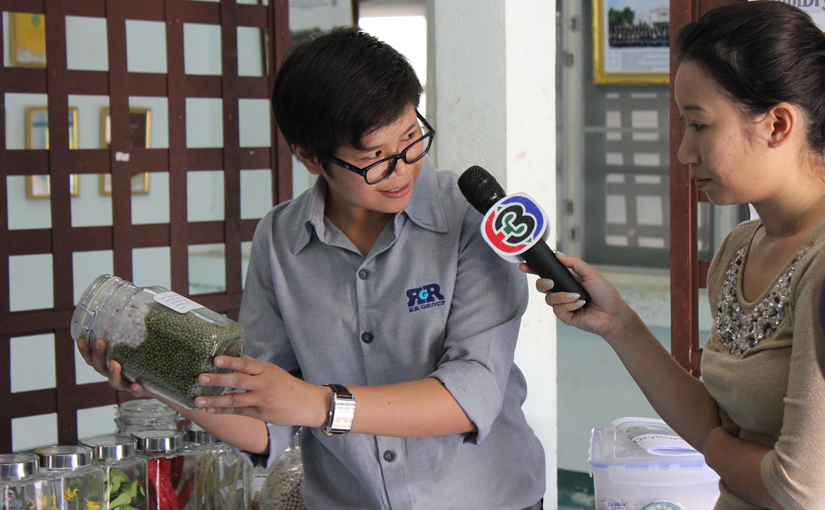
Reporter Giovanni Ortolani visited with Horticulture Innovation Lab partners in Bangkok, Thailand, recently to learn about how farmers in humid climates can better save seed using drying beads. His video (below) and article “How seed-drying beads can empower farmers in the tropics” were published this week on SciDev.Net, a news website focused on science and technology for global development.
When stored in hot, humid conditions, vegetable seed deteriorates rapidly — lowering germination rates and farmers’ yields. Ortolani interviewed Patcharin Taridno, senior manager of seed technology with Rhino Research, about how the company’s zeolite-based “drying beads” can help farmers better dry seeds for storage by reducing relative humidity.
“The drying beads can absorb 30 percent of their weight [in water], which means you know exactly how much the drying beads can absorb. For example, 1 kg of drying beads can absorb 300 grams of water,” she said.

Since the beads only absorb water, they can be heated in an oven (to evaporate the water) and then re-used repeatedly. The beads can be sealed with vegetable seeds in a container with a hygrometer attached to display the relative humidity of the seeds inside.
Next, Ortolani interviewed Professor Poonpipope Kasemsap of Kasetsart University about the drying beads. Though he is not part of the team working on drying beads research, Kasemsap directs the Horticulture Innovation Lab Regional Center at Kasetsart University which promotes technologies that horticultural farmers can use.
“I think the drying beads have tremendous potential,” he said. “It is important for the farmers to [be able to] keep their own seeds because then they don’t need to buy from the seed companies every season, and they are free to keep their own favorite varieties.”
The Horticulture Innovation Lab has supported two research projects focused on the drying beads, both with international teams led by Kent Bradford of UC Davis, as part of Feed the Future, the U.S. government’s global hunger and food security initiative.
Results from these projects have led the team to focus on the “dry chain” for seeds, seeking a variety of ways to dry seed and keep it dry throughout the stages of seed production, storage, transportation, commercial sales, and on-farm use — as described in a recent article in the Feed the Future newsletter.
